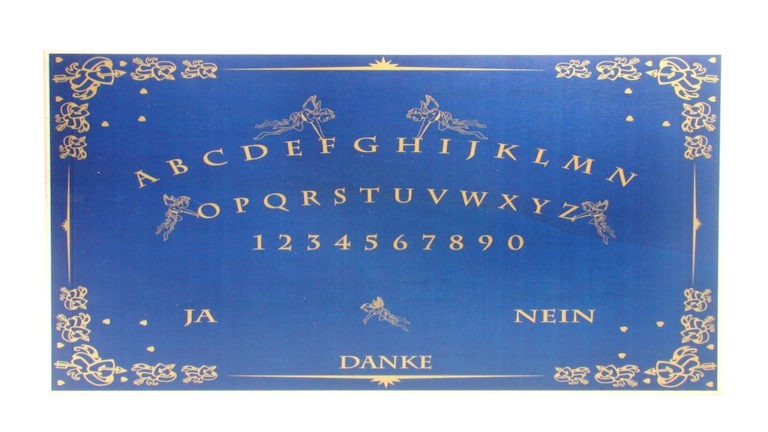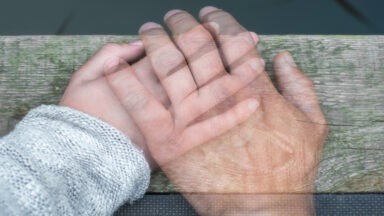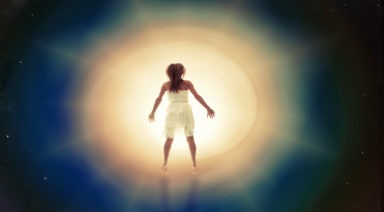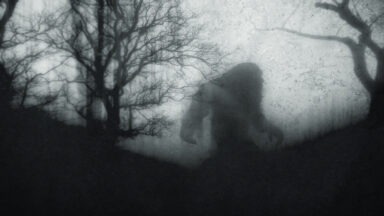The Fascinating History Behind the Ouija Board

Those in tune with the occult likely think it strange to find such a tool as the Ouija Board shelved among sets of board games at the local toy store. Even though it has come to be regarded as a kitschy party game, thousands have reported “eerie” communications with a world beyond the veil of the physical plane. While some call the Ouija Board a game, others swear it is nothing to be trifled with.
For some, the board is an introduction into the ancient art of divination; for others, it is but one more party game to pull out around Halloween. Whether one believes in its mystical qualities, the Ouija Board has a fascinating history. It is a relic that predates horror films, when the spiritually inquisitive were venturing out and looking for a way to commune with loved ones who had passed on.
The Birth of Modern Spiritualism
Historians point to 1848 as the birth of modern spiritualism, when the Fox sisters of Hydesville, New York, began communicating with spirits through a series of knocking sounds. Even though it was later found that the sisters had staged the whole interaction, their alleged ability to bridge the gap between the physical and the spirit world started the ball rolling. Interest in the occult continued to grow so that many were identifying themselves as spiritualists.
Spiritualists believed and taught that the departed would become wiser and continue to mature in the spirit realm — and that some of them would go on to become guides and teachers for those who learned to communicate with them. Mediums were called in to lead seances, and people began using automatic writing to commune with the dead.
The tremendous loss of life and trauma in the American Civil War served to keep spiritualism alive, with family and friends desperately trying to reconnect with soldiers who lost their lives on the battlefield.
By 1886, mediums were communicating with the dead through automatic handwriting, using a planchette — a paddle-shaped object that participants placed their fingers on, consisting of two wheels at its bottom two points and a pencil at its top point. When participants placed their fingers lightly on the planchette, the spirit would steer the device so that the pencil would spell out a message. This design, however, proved to be unwieldy, and it was difficult for participants to make out the message at the end of the session. So there was a need for a better device.
Eventually, a solution came about (though its inventor is unknown): The planchette would stay, except that it would come to be used on something known as a “talking board,” a board with the alphabet and numbers one through ten written out on it. Much like automatic handwriting, those involved in the seance placed their fingers on the planchette, and the planchette move around, resting on various letters or numbers until it spelled out a message.
William Fuld’s Influence
The Ouija Board changed hands numerous times before it became an international success. Elijah Bond filed the first patent on the board, but eventually handed it over to William H. A. Maupin and Charles W. Kennard at the Kennard Novelty Company, in 1890.
When Kennard was dismissed from his own company in 1891 for unknown reasons, a man named William Fuld took the reins as the company supervisor. Within a year, the company changed its name to the Ouija Novelty Company and Fuld filed for a patent on talking boards. Under him, business boomed and the company rose to meet an ever-growing demand for Ouija Boards.
Soon Fuld ventured off and created his own company with his brother. The pair leased the name “Ouija” from the Ouija Novelty Company, but years later their partnership went south. Fuld became the sole proprietor of the company, renaming it William Fuld Manufacturing Company.
Though Fuld was not the inventor of the Ouija Board, he’s often been given credit for doing so. Wide publicity in the 1920s only served to further the spread of this misinformation — as well as branding the back of the board itself with the words “Inventor” and “Original Ouija Board.”
A successful businessman, Fuld claimed to have made three million dollars in profit by 1920. When he met an untimely death in 1927, after falling from a three-story building, his children inherited the company and ran it successfully until 1966, when they sold it to Parker Brothers.
The History Behind the Ouija Board’s Name
There are two conflicting stories of how the Ouija Board got its name. The first says that the board named itself. Elijah Bond, one of the first investors of the board, was using it with his family when they asked for its name. The board apparently spelled out O-U-I-J-A. While many people have interpreted the name to be a combination of both French and German words for “yes,” the family asked the board what its name meant, and it told them, “Good luck.”

A German Ouija Board
The second explanation is that either the spirits or one of the participants of that seance misspelled the name “Ouida,” the pen name of a writer whom Bond’s sister-in-law admired. During the seance, it’s said that she bore a locket with the picture of the writer nestled inside of it, beneath the inscription, “Ouida.”
Either way, the name stuck and the board went on to be manufactured under it.
A Link to the Subconscious Mind
Countless Ouija Board users swear by its otherworldly abilities. They report new insights into their lives, answers to puzzling questions, contact with unseen beings, and roadmaps of their future.
While the board certainly has had critics challenge its validity for more than a century, scientists are beginning to admit that it may actually be a practical tool — but for communing with the subconscious, rather than with the spirit world.
The Smithsonian attributes the board’s seemingly mysterious methodology to the “ideomoter” effect — physical movement made unconsciously.
Since the days of Freud, psychologists have argued that the subconscious contains much more useful information than can be accessed with the conscious mind alone. Taking this idea to task in more recent years, researchers investigated whether the Ouija Board could actually be used to tap into the subconscious.
In 2011, psychology researchers Ron Rensink, Hélène Gauchou, and Sidney Fels, teamed up to learn more about the enigmatic Ouija board. The trio set up an experiment in which two people sat down at a Ouija Board, with one of them blindfolded and both of them lightly resting their hands on the planchette. When the researcher posed a question, the planchette began to move about the board.
Without alerting the blindfolded participant to what was happening, the other participant removed his/her hands and allowed the first to continue using the board. The blindfolded participant answered the questions 65 percent accurately, 15 percent more accurately than guessing without the board. The researchers concluded that this kind of success points to the role of the subconscious in providing answers that the conscious mind is unaware of.
Based on the team’s experiment, Dr. Fels explained, “You do much better with the Ouija on questions that you really don’t think you know, but actually something inside you does know and the Ouija can help you answer above chance.”
While researchers are excited to use the Ouija Board as a tool to prod further into the subconscious, most who take their turn with the game are convinced that it opens a portal into the spirit world. Regardless of how it works, through spirit or subconscious, the Ouija Board seemingly remains as enigmatic and mysterious as the day it was introduced to the public.
And it seems both researchers and believers agree on one point — the board is definitely a mode of communication that makes good on its promise to answer strange questions and provide insight into a realm humans still haven’t been able to thoroughly or reliably explore.
But for those who truly believe that the Ouija Board is connecting with the spiritual world, the findings and claims of researchers are merely suppositions attempting to explain the unknown. After all, where is the dividing line between the subconscious mind and the universal mind, and who is to say which is coming through as the planchette moves across the face of the board?
When Someone Dies, Can They Come Back to See You?

No matter what your spiritual beliefs are, dealing with the death of a loved one can be incredibly difficult. The smallest message or sign from a deceased loved one can mean the world to any human being. However, there are several ways to receive messages from the dead, but they can be rather subtle and might be overlooked or discounted if you don’t know what to look for. Explore life after death to learn whether a deceased person is trying to contact you from the spirit world.
Loved Ones Communicating Beyond the Grave
There are countless cases of loved ones contacting their living counterparts after they’ve passed, or in some cases while they’ve been clinically dead, before being brought back to life.
In one instance, recounted by Dr. Raymond Moody, the researcher who coined the phrase near-death experience or NDE, a surgeon once told him that while operating on a young man, his patient went into cardiac arrest. Believing he had lost the patient, the man’s wife burst into the room screaming that her husband had visited her in the waiting room and told her the doctor thought he was dead but that he was still alive and able to be saved. The surgeon immediately began to perform resuscitation techniques and brought the patient back to life.
After-death communication is very common soon after a loved one passes away. And while everyone’s loved ones have different ways of communicating this, the signs we see are usually more than sheer coincidence.
When looking for signs of a loved one visiting or communicating with you after they have passed, think of things from their life that they had a predilection for, whether that’s a particular animal, flower, or song. These personal affections typically appear in their attempts to reach you in the physical world, and rightfully so. If there’s one thing you’d associate strongly with them, it’s sure to stand out.




































